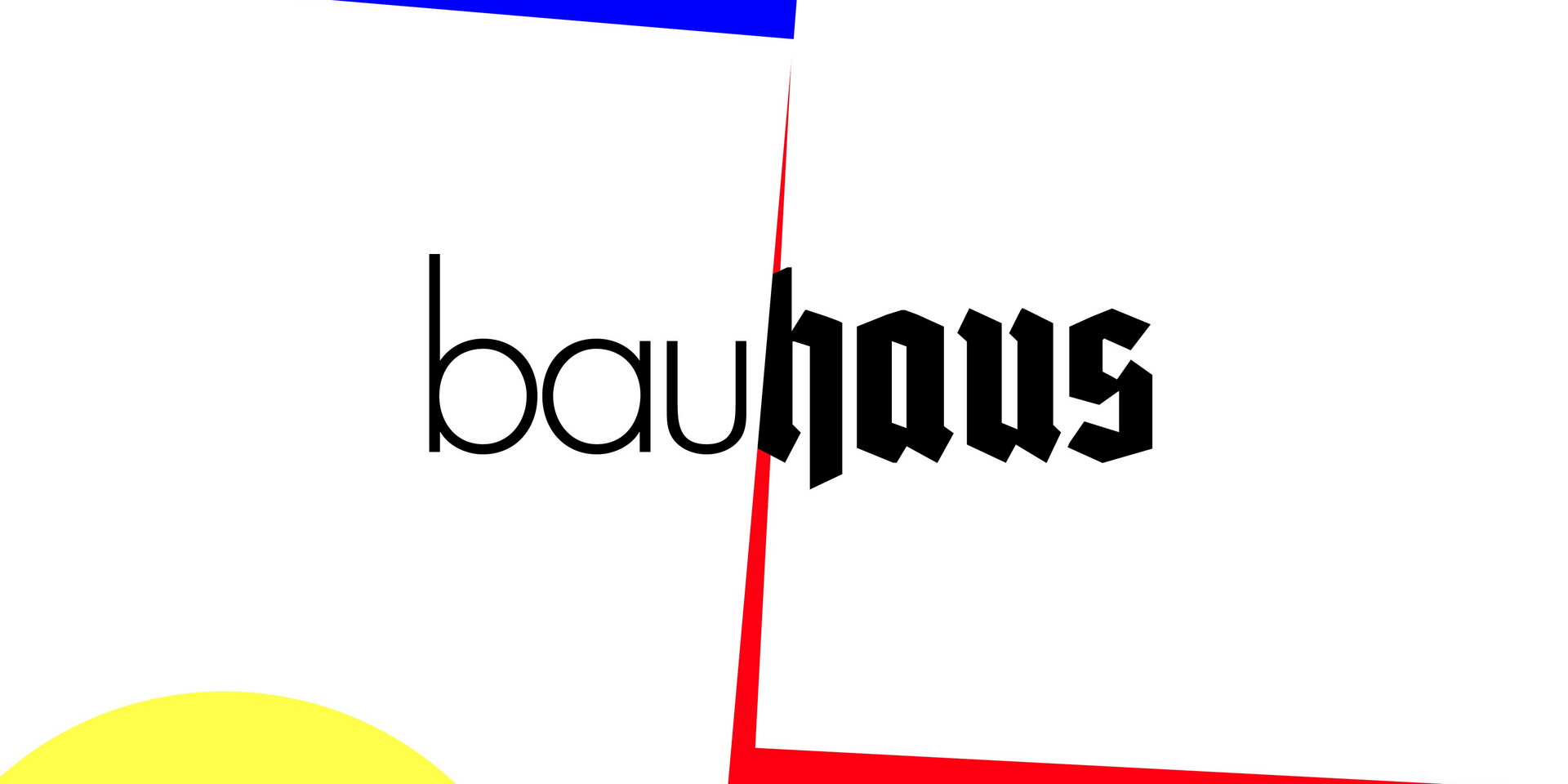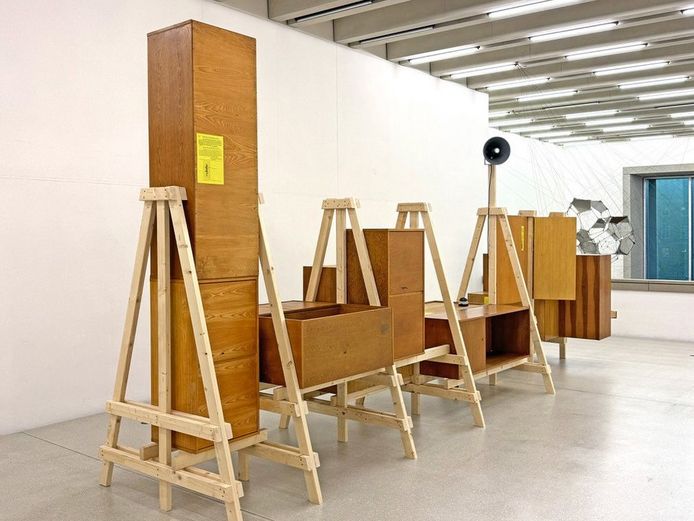Projects of the Klassik Stiftung Weimar are funded by the European Regional Development Fund (ERDF) and the Free State of Thuringia, represented by the State Chancellery of Thuringia, Department of Culture and the Arts.


The first exhibition on the subject of "Bauhaus and National Socialism" illustrates the diverse ways in which artists dealt with a totalitarian system of rule.
The Klassik Stiftung Weimar’s annual exhibition is the first to address the topic of “Bauhaus and National Socialism”. Presented at three museums in the city of Weimar, the show unites some 450 works of art and design from private collections and renowned museums in Europe and the US. These works tell the story of the Bauhaus’s complex political history from its opening in 1919 until its closure in 1933, and the widely varying paths taken by various Bauhaus members under Nazism.
Under the title “The Bauhaus as a Site of Political Contest, 1919-1933”, the station at the Museum Neues Weimar illuminates artistic and political conflicts at the Bauhaus. These began with the founding of the art and design school in Weimar and continued unabated when the Bauhaus moved to Dessau and Berlin. In the Bauhaus Museum, “Removed – Confiscated – Assimilated, 1930/1937” focuses on the “Degenerate Art” confiscations in 1937 and the campaign that preceded it in Weimar. As early as 1930, authorities had ordered the removal of over 70 works by artists such as Lyonel Feininger and Paul Klee from the Weimar Castle Museum. In 1937, more than 450 works were confiscated – a cultural loss to Weimar’s collections that is still felt today. The core of the exhibition at the Schiller-Museum deals with Bauhaus members "Living in the Dictatorship, 1933-1945". It addresses the balancing acts they performed in the face of the new political circumstances after 1933. Many Bauhäusler had few choices; under an anti-leftist and racist regime, they lost their jobs and were forced into exile. At least twenty-one Bauhaus students perished in ghettos and concentration camps. However, the majority were not targets of the Nazi regime. In fact, they participated in propaganda exhibitions and design fairs, and they designed film posters, furniture, household goods, and even busts of Hitler.
Together, the three parts of “Bauhaus and National Socialism” thus present a new, often uncomfortable history of the Bauhaus and its legacies. For, long after 1945, the illusion of modernism—and the Bauhaus with it—as uniquely “good” and “persecuted” persisted. As the fates of many Bauhaus members show, an innovative artistic attitude alone does not protect against the seductions of fascism. Therefore the role of art in a liberal and cosmopolitan society is a question that animates the exhibition in all three of its stations.
Part I “The Bauhaus as a Site of Political Contest, 1919 – 1933”
Museum Neues Weimar | Mon, Wed – Sun, 9:30 am – 6 pm
Part II “Removed – Confiscated – Assimilated 1930/37”
Bauhaus Museum Weimar | Mon, Wed – Sun, 9:30 am – 6 pm
Part III “Living in the Dictatorship, 1933 – 1945”
Schiller Museum | Tue – Sun, 9:30 am – 6 pm
Dr. Anke Blümm, Klassik Stiftung Weimar
Prof. Dr. Elizabeth Otto, University of Buffalo
Prof. Dr. Dr. Patrick Rössler, University of Erfurt
The three-part exhibition is supplemented by the installation “Monument to Honesty” on the mezzanine floor of the Bauhaus Museum Weimar. It was created from the famous Type 602 furniture by the Bauhaus artist Franz Ehrlich (whose last name means “honest”). The work by the artist trio Friedrich von Borries, Frieder Bohaumilitzky and Jens-Uwe Fischer deconstructs the complex biography of the Bauhaus architect, graphic artist and designer Ehrlich (1907-1984), who was a resistance fighter and Buchenwald prisoner, but also an SS architect, a Stasi informant and impostor. Based on his background, the monument questions the dominant self-images of the present: How honest are we?

Modernism combo card (valid starting 1 January 2024) Admission to the Bauhaus Museum Weimar, Museum Neues Weimar, Haus Am Horn, Haus Hohe Pappeln, Nietzsche-Archiv and Schiller Museum also during the exhibition period. |
adults € 17 |
Admission to the Bauhaus sites and museums in Weimar, Berlin and Dessau |
1 pers. 30 € |
Admission to all museums, exhibitions and guided tours by the Klassik Stiftung Weimar |
adults 49 € |
The Weimar+ app offers a free guided tour through all three exhibition parts and interesting background information on selected objects.

The exhibition catalogue brings together the latest international research on the activities of former Bauhaus members before and after 1933. The catalogue will be released in May 2023 by the Hirmer Verlag. Museum edition: € 37, bookstore edition: € 49.90, ISBN: 978-3-7774-4337-9